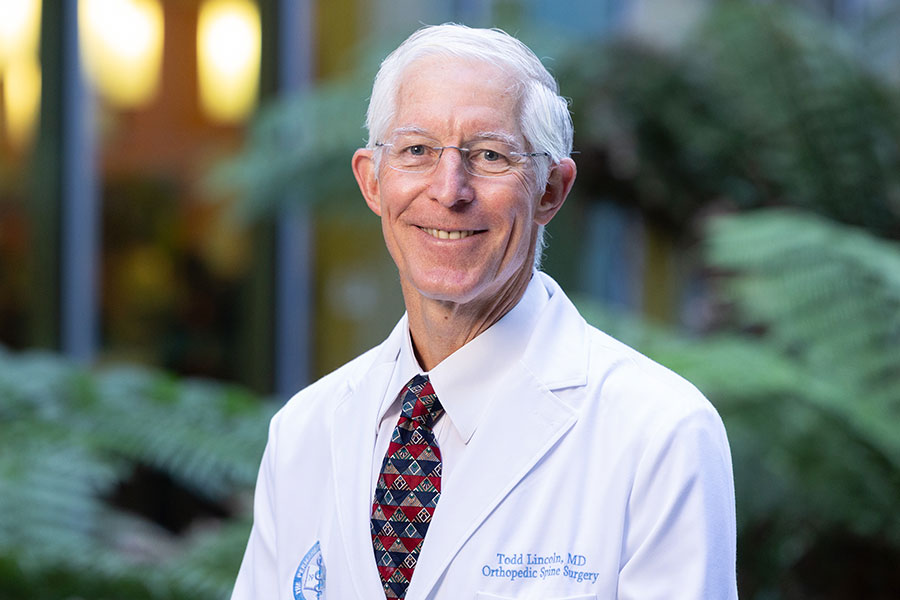San Francisco Business Times – September 14, 2017
As tens of thousands of Americans die from overdosing on opioids every year, health care systems have looked for ways to address the problem.
By 2014, clinicians at Kaiser Permanente had watched the opioid crisis escalate and decided they needed to be part of the solution.
Kaiser, based in Oakland, began to reduce opioid prescriptions and raise clinician and patient awareness about the issue three years ago. It started by investigating how many prescriptions its doctors were giving and what kind of drugs they were prescribing.
“We were ashamed to find out that the most commonly prescribed drug at that point was actually hydrocodone (Vicodin),” said Dr. Sameer Awsare, associate executive director of The Permanente Medical Group in Oakland. “We were not as different as we thought. We really needed to take a look, see who’s on these meds, why they are on it. Are we doing these in a safe manner?”
The climbing death tolls are hard to ignore for an industry looking to curb drug addiction and costs. Half of all opioid overdose deaths involve a prescription drug, and those kinds of overdose deaths have quadrupled since 1999, according to the Centers for Disease Control and Prevention. In addition, more people are ending up in emergency rooms for abuse and addiction of opioids.
Clinician education
Since March 2015, Kaiser has cut the number of opioid prescriptions by one-third, as well as added more protocols around pain medications. That’s thanks to The Permanente Medical Group’s Opioid Initiative, created by Awsare. The program looks at national trends, proper treatments for different conditions and alternatives to opioids
At Kaiser’s Northern California division, the highest number of opioid prescriptions came from internal and family medicine doctors, followed by emergency room doctors and orthopedic surgeons. So Awsare and his colleagues created an education program in 2014 for physicians, clinicians and pharmacists to gather and review the guidelines around opioid medications. Kaiser also began reaching out to patients on opioids about safety.
Kaiser distributes monthly reports on opioid prescriptions to its doctors, which Awsare said provides insight into patient use patterns.
After two years, Kaiser reduced the number of patients on high doses of opioids by 43 percent in Northern California. In March 2017, 75 percent of Northern California patients on high dose opioids completed a urine drug screen within a 12-month period, up from 28 percent the previous year. The test was a way for providers to make sure patients were taking their prescribed medication instead of selling it on the streets.
Today, 99 percent of Kaiser internal and family medicine physicians in Northern California have gone through the education.
“The biggest thing we did different was actually give our doctors time, because all these guidelines are there. If people don’t have time to read them and implement them, nothing will happen.”
Designing the right tools
In part, the rise in opioid deaths come from a rise in prescriptions. So Kaiser turned to its prescription system to give doctors more tools.
Throughout 2014 and 2015, Kaiser reconfigured its electronic medical records with “smart tools” that alert doctors about risks and guidelines before they sign off on a prescription. It presents an opioid agreement letter to the patient, who is also required to watch a video about the risks and benefits before they decide on treatment.
As of March 2017, 75 percent of patients on chronic opioids had signed agreements outlining risks and benefits. That’s up from 47 percent in 2016.
Alternatives to opioids
Kaiser wants to use non-opioid treatments in addition to medication to both address the opioid problem and bring down costs.
“We’re actually saving money, because it’s probably decreasing overdoses and decreasing admissions,” Awsare said.
Other health care organizations are making similar efforts. In October 2016, Anthem Inc. set a goal of reducing opioid prescriptions by 30 percent by 2019. It hit that goal last month after limiting patients to a 14-day supply of short-acting opioids.
At UCSF Health, Dr. Lawrence Poree, director of neuromodulation in the Division of Pain Medicine, said the preventative measures like those at Kaiser work better than blaming physicians after the fact.
“Most (opioids) are prescribed by primary care doctors. They are stretched to the limit and at a huge disadvantage of being pressured to do everything and also be regulators. I applaud Kaiser for trying their best to make sure that infrastructure’s available, but it’s not easy,” Poree said.
UCSF’s pain clinic is run by 15 doctors focusing on neuromodulation, methods of electrical stimulation to the brain used for pain treatment. Poree has been working on those pain treatments since 2000. The clinic treats an average of 800 patients suffering from chronic and surgical pain every month.
“From what I’ve seen from Kaiser, they understand medical efficiency like nobody’s business. The more access there is to opioids, the more diversion, the more abuse. It’s just a simple mathematical game,” he said.
This article originally appeared in the San Francisco Business Times on September 14, 2017






